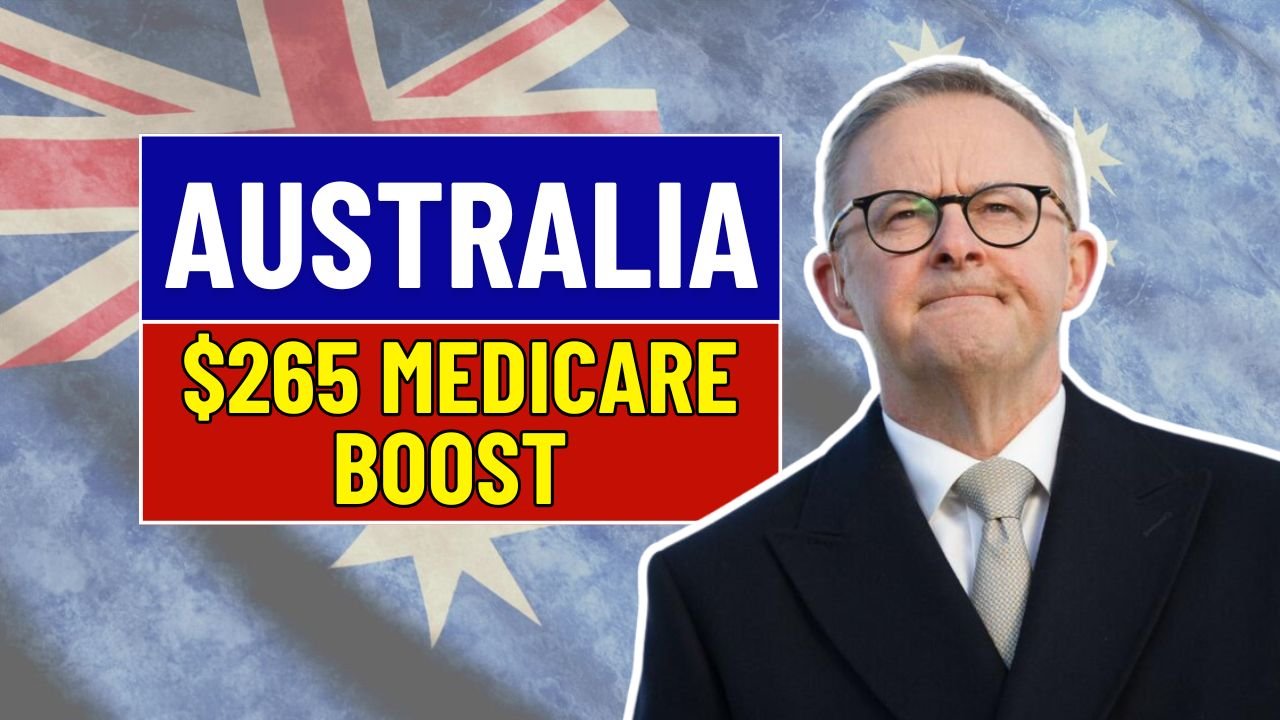Many Australians are unaware that a significant sum of money averaging $265 per person is sitting unclaimed in government systems due to outdated bank details. As of 2025, over $260 million in Medicare refunds remains untouched, with nearly 960,000 citizens potentially entitled to a payout. This amount, known as the $265 Medicare Boost, is a result of services previously claimed under Medicare but not successfully refunded due to administrative lapses.
What Is the $265 Medicare Boost?
Each time a Medicare card is used for medical services, a partial refund is supposed to be deposited into the patient’s bank account. However, if bank information linked to the account is missing, outdated, or incorrect, that refund remains pending. This accumulation over time has led to millions in stalled payments. The government retains the funds until accurate banking details are provided, and in some cases, individual refunds have exceeded $10,000.
Who’s Most Likely to Miss Out?
Although anyone can overlook an unclaimed Medicare refund, certain groups are particularly vulnerable. Elderly individuals who’ve changed banking institutions or relocated to aged care facilities, students who frequently move residences or open new accounts, and parents managing multiple Medicare profiles for their children are often impacted. Frequent movers and young workers just starting out are also among those most likely to have outdated account information.
Why Your Refund Hasn’t Arrived Yet

The most common reason Australians don’t receive their Medicare refund is due to a failure to update bank details after switching accounts. Some people never added their financial details in the first place, while others haven’t accessed their myGov account in years. Inaccurate or expired personal information is one of the primary culprits behind these unclaimed payments.
How to Check If You’re Owed a Refund
To discover whether you have funds waiting to be claimed, the process is fairly simple. Start by logging into your myGov account. If you haven’t already connected Medicare to your account, you will need to link it through the dashboard. Then, navigate to the “My Details” section and update your bank account number and BSB. Once this information is accurate, any pending payments are typically released within three business days, with some Australians receiving their money in just 48 hours.
A Closer Look at the Numbers
Data shows that seniors whose family members manage their accounts are disproportionately affected. Likewise, individuals frequently changing banks, young professionals, and university students often leave their Medicare-linked details outdated. People who move residences frequently without updating their personal details also find themselves missing out on refunds they’re eligible to receive.
Protecting Yourself from Medicare Scams
In the effort to reclaim unclaimed Medicare funds, it’s vital to remain vigilant against scams. Services Australia has clearly stated that it never requests banking information via text messages or emails. Always use the official website for updating your records. Avoid clicking on links from unknown sources or unofficial channels, as they may lead to phishing attacks.
Why the $265 Medicare Refund Shouldn’t Be Ignored
Claiming your Medicare refund is not just about recovering money it’s about receiving what is rightfully yours. Many Australians use the funds to cover essential needs such as groceries, utility bills, or prescription medications. In tough economic times, overlooking a refund that could ease financial strain is a missed opportunity that no eligible person should ignore.
Take Action and Spread the Word
The $265 Medicare Boost is a government-held benefit just waiting to be claimed by those who qualify. Checking your myGov account and updating your banking details only takes a few minutes, but it could return hundreds if not thousands of dollars to your pocket. Share this vital information with loved ones, especially those in vulnerable categories, to ensure no eligible Australian misses out on this hidden financial relief.


